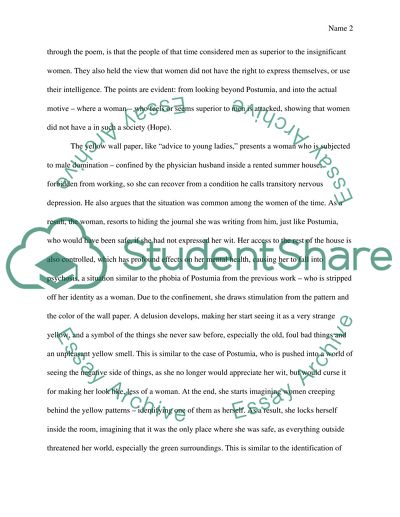Cite this document
(“The Yellow Wallpaper and Advice to Young Ladies Essay”, n.d.)
Retrieved from https://studentshare.org/literature/1450043-the-yellow-wallpaper-and-advice-to-young-ladies
Retrieved from https://studentshare.org/literature/1450043-the-yellow-wallpaper-and-advice-to-young-ladies
(The Yellow Wallpaper and Advice to Young Ladies Essay)
https://studentshare.org/literature/1450043-the-yellow-wallpaper-and-advice-to-young-ladies.
https://studentshare.org/literature/1450043-the-yellow-wallpaper-and-advice-to-young-ladies.
“The Yellow Wallpaper and Advice to Young Ladies Essay”, n.d. https://studentshare.org/literature/1450043-the-yellow-wallpaper-and-advice-to-young-ladies.


